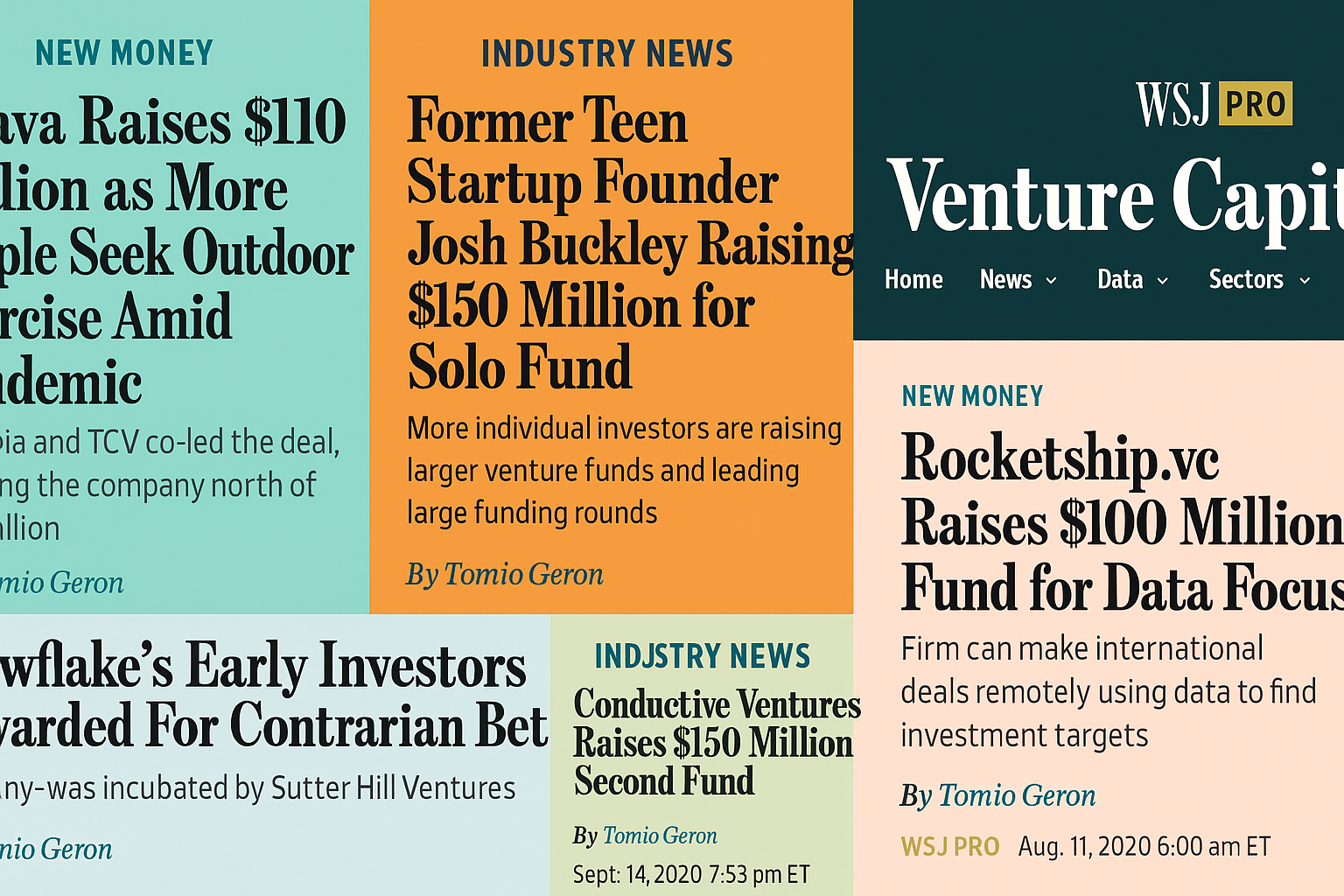For founders and startups, funding announcements can be a career-defining moment.
But for reporters, they’re just another Tuesday.
Bridging that gap and turning a financial transaction into a larger story that matters is an art.
The challenge is that a typical reporter can get 100 or more pitches daily and may only pursue one or two of them. Funding news is just as competitive, with 10 or more $5- to $10-million startup funding announcements on an average weekday.
But often only one or two of them will result in an actual full story from a media outlet.
Five to 10 years ago, companies could expect media coverage from TechCrunch, VentureBeat and other media outlets to cover many if not all funding rounds. Today, the media landscape is dramatically different. Publications across media channels have downsized, and reporters whose work impacts public perception with startups’ target audience are often stretched thin.
For startups, funding news can be a major boost. This news is often the clearest chance for companies to tell their story, increase their brand awareness and shape public opinion.
While funding in and of itself isn’t as big of a company milestone as some other forms of company success, it is validation that can have a significant impact, potentially resulting in visibility for potential investors and inbound leads for new funding. It is also a strong signal for new hires and recruiting — while also serving as a morale boost for existing employees to support the mission of the startup since many employees join a startup believing in some larger goal.
Many founders are excited to get coverage of their funding news but then face the reality that many others are also announcing funding at the same time. Because there are so many startups along with PR firms announcing funding rounds, reporters will often simply select the largest round. Some reporters at top-tier outlets will only cover rounds of $100 million or higher.
More importantly, funding itself often doesn’t move the needle for reporters. Many journalists prefer to do a deeper dive on a company or trend or want a major funding scoop/exclusive.
Startup leaders and PR teams often fail to understand that, so most funding pitches or stories are too narrowly focused just on the company and don’t speak to broader trends or topics. They frequently fail to answer the basic question: “Why should I care?” Funding pitches also may lack connection to a strong emotion to really pull a reader (and a reporter) into a story.
Startups and their PR agencies should recognize that without knowing anything about a company, reporters want to see firm proof points. There are additional nuggets of information that can boost the chances of reporters believing that a company is worth writing about.
- A prominent venture capital firm or individual VC involved in a deal will add credibility, and reporters will often want to speak with those investors.
- Other proof points that can help public relations agencies advance their startup clients’ PR strategy efforts relative to funding news include customer validation and case studies. Such media assets show real traction, demonstrating a business is truly scaling.
- Analyst endorsements are also a powerful way of legitimizing a company that a reporter has never heard of, since analysts are often viewed as informed experts in the industry.
- Providing metrics about the business can also be a way to support a growth story. While many companies do not want to disclose company financials, even providing growth metrics, customer acquisition numbers or other metrics of success – in a press release, in pitches to media and/or during a press conference, for example – can go a long way.
- Finally, the best way to generate interest is to find an angle for a story that connects to larger topics that a reporter is already working on.
Marketing and other business leaders at startups and their PR teams should also be aware that different stages of funding often require different stories.
- For early stage pre-seed, seed or Series A funding news, the story is often an “origin story” about the founders, introduction of a new vision or disruption of a larger industry.
- For later stage Series B or C deals, it often includes proof points, traction, customers or industry leadership.
There are some things that founders should be aware of and try to avoid when preparing to release their funding news.
- Be aware of timing, as releasing news during heavy news moments can impact reporters’ ability to cover the news.
- Make sure that your messaging is fully baked and speaks to larger industry trends.
- Do not mislabel your funding rounds — for example, as Series A when it is actually a bridge round. This will only result in more headaches in the future.
While working on coverage for your funding news, try to keep an eye on the bigger picture and not just the “transaction” of one story. While you want the best coverage possible for your company, you also want to reach a longer-term goal of developing relationships with reporters.
These connections with select influential journalists can be invaluable to you company and PR team in the future. While a reporter may not cover your funding news this time, if you develop that relationship now, they may write an even bigger story about your company later.
Funding news is a major company milestone, but turning it into media coverage takes strategy, creativity and storytelling. Generating coverage doesn’t just depend on the size of the round; it also depends on strategic PR to find the bigger story beyond the funding by connecting with real human emotion, emphasizing broader trends and providing real proof points.
More importantly, building relationships with reporters on the way – and employing a politely pushy PR team to keep the conversation going – can set the stage for significant future stories.




